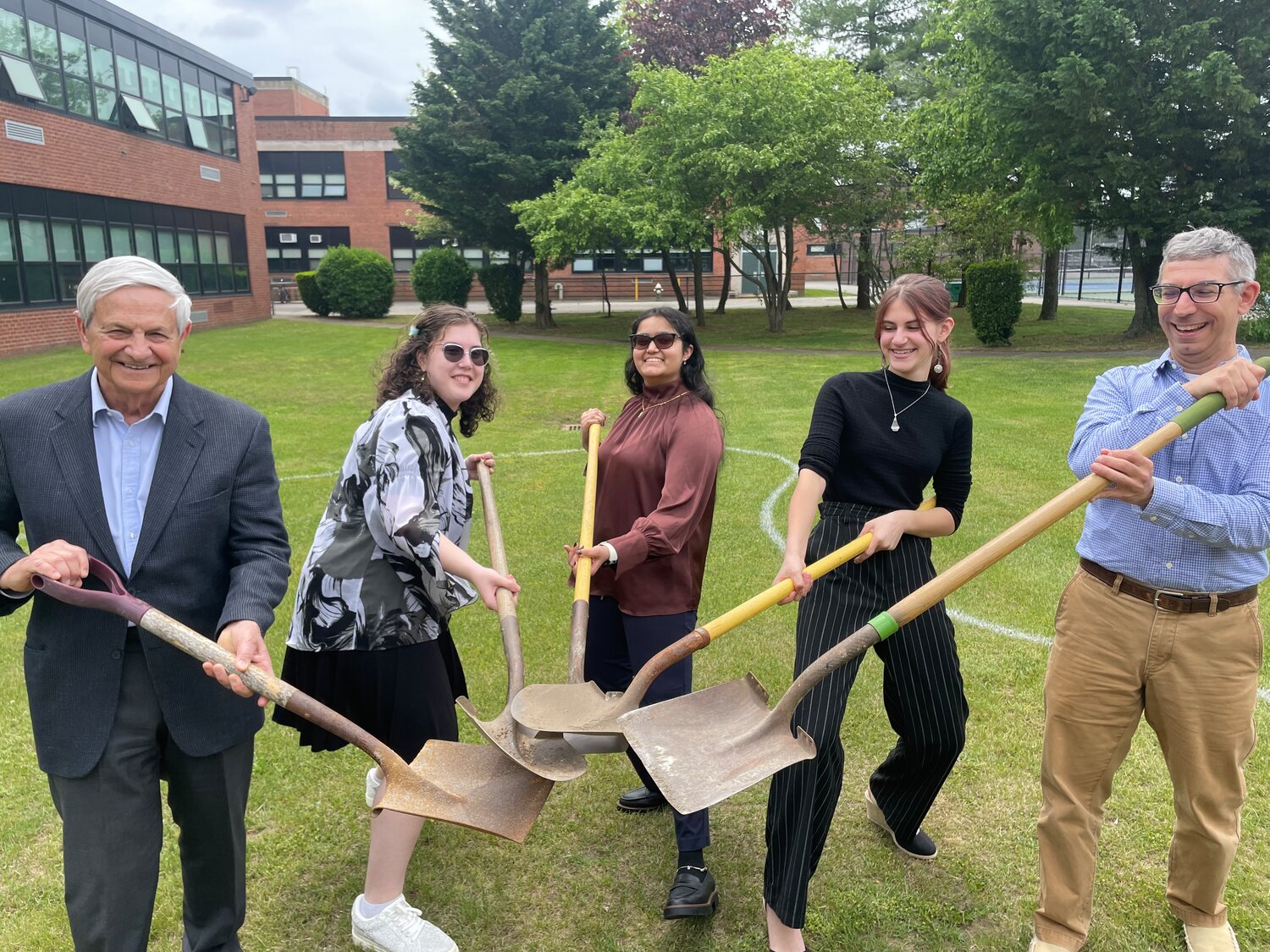Student rain garden turning showers into flowers
It’s one thing to recognize a problem in your community. It’s another thing entirely to do something about it. Maya Flam, Vera Hametz and Harpreet Kaur, juniors at West Hempstead High School, completed a project that improves water quality while making their school more beautiful: a rain garden.
“It’s for our school, it’s for our environment,” Hametz said. “It’s helping more than just us.”
An unused patch of lawn near the basketball courts will soon become a small sanctuary of hyacinths, frost flowers and other native plants. It will boost the ecosystem for pollinators like butterflies and bees, and the plants’ roots will help absorb excess nitrogen that otherwise would run off into the local water supply.
“It feels really good to contribute something,” Flam said. “A lot of clubs, you do stuff and it’s just for that year. But this is something that’s going to last more than this year.”
The students’ project lies at the intersection of form and function: It reduces pollution, mitigates the heavy flooding on that lawn when it rains, and also creates something that students can enjoy on a walk outside, or looking out their classroom window.
“We were trying to prioritize having both STEM and aesthetics,” Kaur said, referring to the complementary disciplines of science, technology, engineering and math. “And with all the work we put in, and all the ideas we had, we actually made something. That’s really cool.”
Nitrogen is the leading cause of water quality deterioration on Long Island, according to the state Department of Environmental Conservation. It harms local ecosystems, degrades wetlands and marine habitats, and contaminates the water supply. In an effort to reduce nitrogen pollution, the Long Island Regional Planning Council has been searching for student projects that would help make an impact. Flam, Hametz and Kaur’s project was among the winners of the council’s annual Long Island Water Quality STEM Challenge, and their design won a grant of just over $1,000 for the high school. The students also received a commendation from Nassau County Legislator Bill Gaylor.
“As young leaders, you have shown that you’re not only aware of the critical issues facing our region, but also proactive in finding solutions,” Karen Brohm, president of the West Hempstead Board of Education, told them. “Your project serves as a testament to the importance of STEM education, and the role it plays in shaping a sustainable future for Long Island.”
The project “serves as a beacon of hope for our community,” Dina Reilly, assistant superintendent for curriculum and instruction, added. “Your hard work demonstrates how thoughtful design and scientific principles can harmoniously coexist to mitigate environmental risks and enhance the beauty of the West Hempstead surroundings.”
Flam, Hametz and Kaur’s rain garden is an extension of a project they did together in their Earth Science class last year. When Sal Trupia, their science teacher and project mentor, heard of the LIRPC Water Quality Project, he knew they would be the perfect candidates.
“I’m really proud of them,” Trupia said. “They did a lot of work. They did an amazing job.”
The three friends may only have one more year at the high school, but they take comfort in knowing their project will benefit generations to come. The rain garden is an “eternal living classroom,” LIRPC spokesman Mark Smith.
“Having an interactive classroom,” Kaur said. “Having something where you can come outside and be like, ‘That’s nature. That’s something you can actually observe.’”
“Like the photography classes,” Flam said. “If we’re having all these plants here, there will most likely be animals and bugs coming in. (Photography students) could come and capture that.”
“It’s also good for still-lifes and drawings and different types of paintings,” Hametz added. “Good inspiration for AP Art students.”
The rain garden “will be beautiful out here, and also serve students going forward,” district Superintendent Daniel Rehman said. “Once it’s in place, it’ll be an opportunity for instruction for years to come.”
Next year, as seniors, Flam, Hametz and Kaur plan to see their project through to the end.
“This is our baby, you know?” Kaur said. “So we’re trying to nurture it.”
“It’s just cool knowing we did this,” Hametz said. “It’s there.”
“We only have one more year to enjoy it,” Flam said, “but it should be fun looking out the window and being like, ‘We did that.’”






